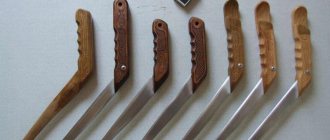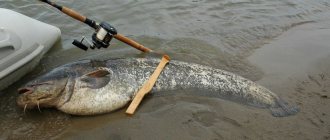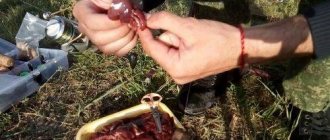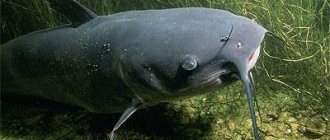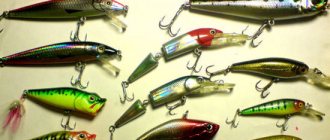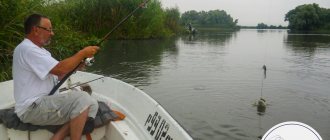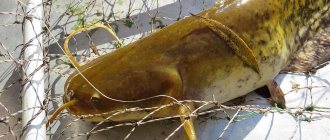Catching catfish is fundamentally different from catching any other fish. The reason for this, of course, is the size of the freshwater giant - the catfish. It is the size of the fish that determines the choice of hook on which to catch it. So if you have previously caught carp and crucian carp and suddenly decided to switch to catfishing, it is not at all surprising that you are wondering about the selection of gear, and in this case, a hook for catfish.
Yes, to catch catfish you need completely different hooks and your catch, or lack thereof, will depend on the right choice. After all, if you choose the wrong hook, the catfish will either not be hooked on it, or will simply straighten out. Catfish are strong fish, so the choice of hook must be approached with all responsibility. Next, we will look at which hooks to choose for catching catfish in great detail, and if you are still looking for information directly on catching catfish, I recommend reading my article about it.
Catfish hook size
Well, of course, the main parameter of a catfish hook is its size.
What is the optimal hook size for catfish? Well, first of all, you need to decide what kind of fish you call catfish. If you are going to catch catfish up to 5 kg, then even carp hooks will suit you, or you can take slightly larger ones. But to catch catfish of larger sizes, it is necessary to take really catfish hooks. To catch catfish up to 10 kg, use hooks No. 5/0-6/0.
To catch catfish up to 15 kg, use hooks up to No. 9/0.
For catching catfish over 15 kg, use hooks No. 10/0, 11/0 and higher.
The choice of hook can also be influenced by the bait, although, of course, the size of the fish will also depend on the bait. But still, you should know that catching catfish with a bunch of crawlers should be on smaller hooks, and if large live bait, chicken or something similar is used as bait, then a larger hook for catfish will be needed. But it’s optimal to focus on the size of the fish; you won’t catch 20 kg of catfish on a crawl, will you? If you suddenly planned to do so, you should know that the probability of catching a large catfish with such bait is very negligible; it is better to use large live bait, offal, pieces of meat, or, in extreme cases, at least a frog.
Popular models of hooks for catfish
Countries producing hooks: Japan (Kamasan; Gamakatsu, TMC); England (Partridge); Norway(Mustad); USA (Daiichi, Tru-Turn, Xpoint, Eagle Claw, Lazer, Owner, Spintech Hooks) and Finland (VMC). Russia does not have its own manufacturer.
Fishermen most often use Owner hooks. Its range includes models of any size and shape, as well as single, double and triple. Covering: tin. The weight that the hook can support depends on the size, but most often it is about 100 kg. Prices depend on size and strength, ranging from 220 rubles to 1200 rubles. For example, the Owner TIVA 5621 ST-21 set. The set contains eight triple hooks, 0.18 - 0.43 mm. Sizes from 4 to 10. Cost 380 rub.
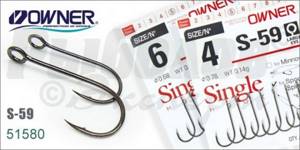
Panacea Company. Deep water hooks complete with artificial bait. There are single, double and triple, sold in sets of 12 and 24 hooks. Price about 375 rub.
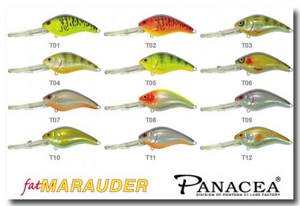
KAMATSU hooks made from high quality materials are available in triple and double hooks. Round hook, suitable for live fish and spinning baits. Price – 140 rubles for 1 piece.
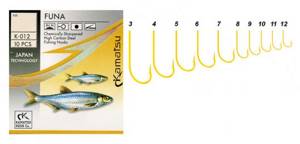
GAMAKATSU hooks double, triple and single. There are series made specifically for fishing with dough, mastyrka - there is a spring for this. Price - from 80 to 300, depending on the type of hook.
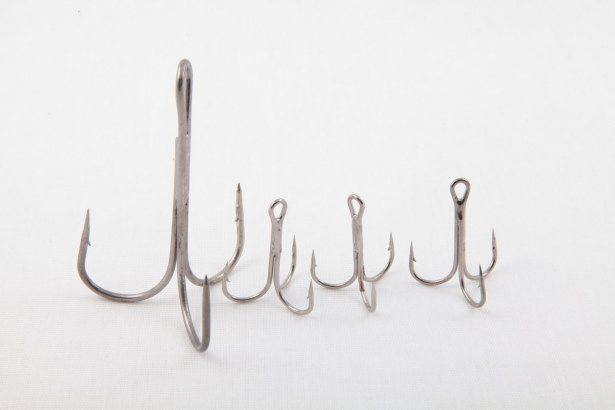
Arari Soi hooks. Sizes – 9/0, 10/0, 11/0. High quality allows you to catch fish with greater weight. The cost for a set of 5 hooks is more than 450 rubles.
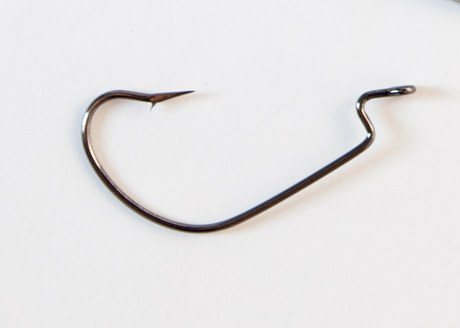
Other characteristics of the catfish hook
What else should you know about a catfish hook other than its size? Perhaps the most important thing is the size, but still, if you want to approach the choice of this element of gear as efficiently and responsibly as possible, then you should pay attention to the following points:
- The hook barb should not be too large or small. The golden mean is its optimal size, otherwise you risk getting annoying derailments quite often.
- When hooking a hook, it is better to choose a rounded one. This way we will also minimize the risk of the fish leaving after hooking.
- The strength of the hook should be maximum. Even if you just pull a weight of 15 kg or more out of the water, not every hook will hold it, but the catfish will still offer resistance, and not a little. Therefore, choose catfish hooks from quality manufacturers and preferably made from stainless high-carbon steel, which will never bend.
- The sharpness of the hook , by the way, is also important, but if you listen to the previous advice and take high-quality hooks from a well-known brand, then this question, I think, will disappear by itself.
rybkolov.ru
Catfishing is extreme fishing.
Catfish is not the strongest fish, but given the weight of the catfish, fighting it is difficult. The power of a large catfish is a serious test for the fishing tackle and professionalism. So, it is important that all elements of the tackle are correctly selected and balanced. Now let's talk about hooks for catching catfish .
Many novice fish catchers ask themselves this question: what kind of hooks should be used for catching catfish. Throughout the gear (and this is, as a rule, donka) everything should be powerful: a strong rod, a high-torque reel, a thick, reliable cord. High demands are also placed on hooks. Let's talk about this in more detail.
So, the requirements for a catfish hook:
1. Matching the nozzle;
2. High-quality cutting;
3. Durability when playing.
Therefore. Since mainly large, voluminous baits are used for catfish, very large hooks Nos. 3/0 - 6/0 and even larger, homemade hooks are used.
As for the design of such hooks, large single hooks are preferable. Tees and doubles are used relatively rarely when catching catfish.
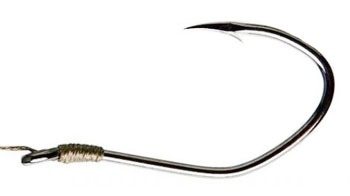
Regarding the quality of the hook, there must be sufficient sharpness. Those. Despite the impressive thickness of the wire, the catfish hook must have a very sharp sting and a reliable barb. This will allow you to cut through the catfish’s mouth and hold it securely.
The strength of catfish hooks must be unprecedented! Those. high-quality steel must be used; properly tempered. The hooks should not bend, i.e. the degree of hardening must be sufficient. But also not overheated, because... These hooks break. The hook must be forged, i.e. its cross-section will not be round, but somewhat flattened on the fore-end. The shape of the hook can be different, as well as the length of the fore-end. It depends on the type of nozzle. Most catfish hooks have a sting curved inward to better hold the hooked fish. Some hooks have a pair of notches on the shank for better retention of the bait (especially important when fishing with crawlers).
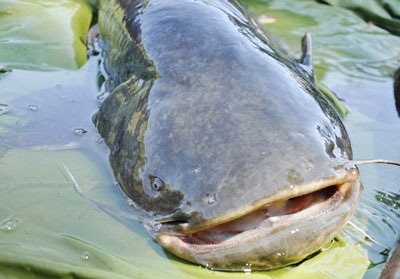
We have to admit that at the moment, the best catfish hooks are Japanese.
Source
fish-guide.ru
Making your own hooks for catfish
To make a simple hook you will need strong, thick wire. A piece of wire about 5-8 cm, needs to be straightened on a smooth surface. Then, gradually, using pliers, wire cutters or a hammer, a loop is made for threading the fishing line. After this, we bend the hook, giving it the desired shape so that the sting sticks out level with the loop for the fishing line or slightly lower. The sting may be slightly bent outward or inward.
The next stage is sharpening the tip. Can be done with a knife or a sharpening stone. To give strength, the hook can be heat treated, but if you are already in nature, you can do without it.
The advantage of homemade hooks is that they can be made from available materials. There are known methods of making it from nails and tin cans. Also, such hooks will meet all personal preferences, and with the proper approach they will not differ in strength from store-bought models. The price is also considered a significant advantage.
Basic requirements for hooks
First of all, you need to choose a specialized store that has a large number of gear, and independently understand their technical characteristics. You also need to remember that there are two criteria that every angler should know before purchasing a hook. These include:
- Strength. Since this whiskered predator is a large fish, the tackle must have good strength. If you use a low-quality hook, the fish may break off or the hook itself may bend or break. Therefore, you need to check the tackle yourself by pressing harder on it. If the hook bends, it doesn't fit.
- Sharpness. The hook should not be blunt, otherwise all efforts to catch fish will be in vain, since the catfish will easily jump off such gear. It’s best to try piercing a cardboard or thin board with a hook in the store to be sure of its sharpness. In addition, the sharpness should remain the same as at the beginning of the purchase. If it is lost, then this is caused by low-quality metal or defects.
Hooks for catfish or other fish should not be deformed or kinked. They must be made from a single piece of metal.
Blitz tips
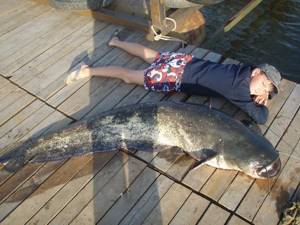
- , it is recommended to choose your fishing spots wisely. These are, first of all, deep-water areas of the reservoir, places with dense vegetation, and secluded corners.
- As for gear and additional devices , everything should be thought out to the smallest detail (reliable and sharp hooks, a high-quality leash, the right fishing rod and suitable fishing line).
- The bait in this case plays an important role, this is half the success. It must be one of the giant's favorite treats.
- Catching catfish with a kwok is truly an exciting event where the patience, strength, and dexterity of the fisherman are demonstrated.
Requirements for selecting hooks
When considering which catfish hooks will be the best choice, you need to pay attention to some parameters of these products. Standard tackle must have a tip, a head, a fore-end, a hook and a beard.
The sting can have different shapes. This is an irregular pyramid, a regular cone, a point. Each of these types is suitable for fishing. The fisherman himself chooses the correct hook shape. You should not forget to check the ideal sharpness of the sting.
Knowing how to properly hook a fish is considered an important part of fishing. The fish often does not swallow the bait whole, but only touches it. Success will depend on hooking. Experienced fishermen do not recommend choosing hooks with small internal space. Because of this, the catfish can easily get off the hook.
It is best to choose a medium-sized beard. The head is divided into three types. It can be straight, curved inward or outward. Experts make their choice on the first and third options.
Choosing gear according to fishing method
When preparing to fish for catfish, it is important to decide not only on the size of the hook, but also on its type, depending on the fishing method.
So, the following types of fishing are distinguished:
- Nodding. Here we use hooks that have a slight bend towards the shoulder blade. They are woven into a leash made of fishing line.
- Donkey fishing. Hooks are used that have a classic shape and are the same as on carp.
- A method of fishing by line. You need to use a straight hook with an extended shank.
- Double hook for quoting. Hooks are used, connected to each other with braided fishing line at a short distance.
- Triple hook for quoting. The leash uses 6 braided lines.
It is worth paying attention to the fact that there should be no knots to prepare the tackle for catfish!
Selection of hooks
There is a huge selection of hooks for catching catfish on sale. To choose the right one, you need to focus on its brand and size. Popular manufacturers are:
- Panacea. This type of gear is used for fishing at great depths. Typically, hooks from this company are used for artificial baits. You can choose from single, double and triple varieties. According to experts, 10mm hooks will be suitable. They are suitable for large catches. Artificial bait included.
- Kamatsu. The high quality of the hooks allows them to be used for bait on spinning tackle. They have a rounded forearm rise, and the size ranges from 2 to 11 mm.
- Arari Soi. They are of high quality and suitable for catching large catfish. Sizes, according to experienced fishermen, should be chosen from 9 to 11 mm.
If an inexperienced fisherman decides to choose the first hook he comes across, then during fishing the fish may simply jump off.
Popular hook models
Many manufacturers make hooks for catfish, but the top ones are:
Panacea
Suitable for deep-sea reservoirs and artificial bait - size 10 mm.
Kamatsu
Designed for spinning (live) tackle. Size – 2-11 mm.
Arari Soi
Designed for large catfish, size 9-11 mm.
Owner
This manufacturer has double pewter products (4-10 mm).
GAMAKATSU
The products of this company differ from others in that they have a spring for inserting the dough.
Hook material and size
Fishing hooks are made from high carbon and stainless steel. A special coating protects the tackle from rust and ensures its durability. If the hook does not rust, it will remain sharp. This is the main rule when choosing such gear.
The steel from which the hooks are made goes through a number of stages of heat treatment. Therefore, it will not spoil even with the maximum weight of the fish. If the buyer decides to save money on hooks and tries to make them himself, he should use fire-heated wire for these purposes.
It is also important to choose the right size hooks for catfish. They are usually written in Roman numerals from I to IV. In world practice, you can find more categories of hooks. The width of such gear, as a rule, ranges from 0.1 to 11 millimeters. To catch catfish, it is better to select a size of 9-11 mm with a width of 0.2-0.5 mm.
You can also fish with a single hook, which is suitable for small catfish, as well as with a double and triple hook. In this case, artificial baits are used.
Hook size
Russian catfish hooks are marked with Roman numerals from first to fourth. There are a total of 32 categories that have hooks for catfish. Their dimensions are as follows: the smallest is 1.7 mm wide, and the largest is 10 mm. For catching catfish, 9/0, 10/0, 11/0 widths from 0.15 to 0.5 mm are suitable. They come in single, double and triple. For small fish, you can take a single one and use any bait. They can be heated and soldered together (even at home) to create double and triple hooks. These are best used together with live bait.
Article on the topic: Trolling catfish
Making hooks at home
Many fishermen are interested in questions about how to make them yourself and how to tie hooks for catfish. To perform this work, you need to acquire thick wire. First, you should cut off 5-6 centimeters from the skein and straighten it on a flat surface. Next, you will need to take wire cutters and make a loop for the fishing line. Then you need to bend the hook, giving it the required shape so that the tip is at the level of the line loop. The sting can be left bent inward or outward (as you prefer).
After the first preparations, the tip needs to be sharpened. As a rule, this is done with a knife or a sharpening stone. To give the tackle strength, it should be heated over a fire.
The advantage of such hooks is that they can be made from various available materials. If you approach the process of making hooks at home correctly, they will be practically no different from purchased products.
How to tie a hook on a catfish
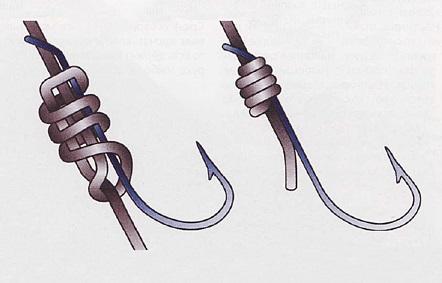
Somyatniks use a method of weaving the forend into the leash of the tackle, which requires special equipment in the form of a knitting device. Such tyings are durable, but quite labor-intensive and are prepared at home in advance of fishing trips. In field conditions, a fisherman has the right to tie a knot known to him, which will ensure reliability and guarantee spontaneous untying. Given the large diameters of the cords, the loops of the knots are folded tightly and evenly without overlapping each other. Tighten the knitting to the limits of effort, eliminating all possible loosening.
Important! For greater reliability, after tightening the cord, it is recommended to glue the finished knot, which will reduce internal friction and prevent possible self-loosening of the installation.
Mount selection
When learning how to tie a hook on a catfish, you need to consider several ways to attach them. The most popular methods are:
- Canadian eight. Used to strengthen the spoon to the fishing line. First you need to thread the fishing line through the ring and make a circle around it. Insert the fishing line into the loop.
- Fisherman's eight. As a rule, it will not be possible to make such a knot right away without training. The advantage of this fastening is that the hook will not come undone from the fishing line. You need to thread the fishing line through the eye of the hook and wrap it around. Then again thread the fishing line through the ring and through the circle of the fishing line itself.
- Gripping unit. More suitable for nylon fishing line. First, you need to pass the thread through the carabiner and wrap it three times to make loops. Then the end of the line is threaded through the first turn. The entire thread is pulled tight to secure the hook.
- Bayonet knot. It is not suitable for synthetic fishing line, since it will definitely break when catching fish. The method is simple: thread the fishing line into the eye of the tackle and make a couple of turns around. Then fix the knot until it is completely ready.
- California Knot. The fishing line should be folded into 2 equal parts and threaded through the eyelet. Then you need to make a circle between the fishing line and thread the end of the fishing line into the resulting loop.
The choice depends on the preferences and skills of the fisherman, and the type of fishing line.
Methods for attaching hooks
- The Canadian figure eight is a knot for mounting on a synthetic fishing line, which is easy to untie if necessary.
Suitable for attaching spoons and hooks to a leash. This is a fairly strong knot that gives strength to the fishing line itself. To install, you need to make a ring out of fishing line, wrap it around the ring 5 times and thread the end of the fishing line through the hole, tighten it. Canadian eight - A bayonet knot is used to attach a hook to a fishing line, but synthetics are not suitable for making it for catching large prey; it will quickly stretch out, break or unravel.
To make a knot, you need to pass the main fishing line through the eye of the hook, wrap it 2 times around the circumference and the knot is ready. Bayonet knot - The fishing eight is a popular and durable way to tie a hook.
To knit a figure eight, you must first practice, otherwise the knot may come undone or break at the most inopportune moment. To install, thread the fishing line through the eyelet. Wrap the end of the fishing line around the circumference, pass through the ring and into the circle. Wrap the circle several more times, and place the resulting knot over the hook. Fisherman's Eight - Gripping unit or half if necessary, tie one end of the fishing line to the other.
- Double stevedoring for attachment to artificial bait for live bait. Suitable for catching catfish in winter when using a weighted bait design. To install, pass the fishing line through the carabiner twice to form a loop, loop it around 4 times, and pass the end of the fishing line through all the turns. Fix, i.e. tighten the knot.
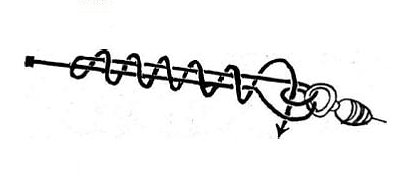
Double stevedoring knot
- Californian for tying nylon bait.
This is a fairly simple and reliable unit for fastening. To do this, fold the fishing line in half, thread it through the eye of the hook, align the ends of the fishing line, wrap it 2 times around the hook, and tighten it with a knot. California Knot - The stepped knot is suitable for fishing in winter to make the bait more natural when playing with fish in the water column.
Step knot - The shark knot is difficult to install and requires skill, but reliable fastening if you have a specific fishing line.
- A blind , simple and reliable way to tie a hook if there is a loose loop on the leash.
For installation, thread a fishing line, preferably cotton, into the eyelet, throw it over the hook several times, and tighten it. Blind node
Catfish bait
Fishermen prefer to go to bodies of water that are familiar to them. Here you can predict which underwater inhabitant will be fished for. If the body of water is unfamiliar, you have to act according to the situation. The most important thing to pay attention to is the bait that the fish will accept. It is important to pay great attention to this issue when choosing hooks for catfish.
Large catfish will not bite on small bait. To catch a large specimen weighing about 70 kilograms, you will need chicken meat. Therefore, any bait should be prepared in advance. A large frog, dung worm, beetle larvae, locust or a piece of small fish will also work.
Hooks for catfish.
Page menu:
- Homemade hooks for catfish
- Hooks for catching catfish using kwok
- Hooks for catching catfish on donks
- Hooks for catching catfish using a line
- Double hooks for catching catfish using kwok
- Tees for catfish
- How to tie a hook on a catfish
This is not a catfish hook museum. Stories are planned about hooks sold in fishing stores. Without unnecessary advertising, since the author of the site values \u200b\u200bhis name. No decision has been made about the future of this page, how to simultaneously talk about hooks for fishing with kwok and donks, about single hooks and treble hooks, about homemade ones and the “teenage” state of development. There is a lot of interesting things ahead.
Fishing stores are filled with a variety of hooks for catfish. Catfish fishermen still use homemade hooks to catch catfish.
My “favorite size” hook. I use these as “standard” hooks. Depending on the situation, I change leashes. The “factory” hook was made in the Soviet Union, unfortunately the tip is slightly retracted, but these are the hooks that have stuck with me.
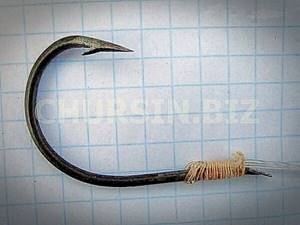
Expert advice
You should not go fishing for catfish without special training. This activity is not for beginners. Every fisherman, going to a pond, must be fully prepared at any time of the year. You need to have all the necessary equipment with you.
When buying catfish hooks in a store, you need to pay attention to the composition of the material, the weight that the hook can withstand, the shape and size. It is important to take into account the time of day and choose the right type of bait.
Having considered the features of hooks for catching catfish, as well as the rules for their selection and manufacture, everyone will be able to prepare the right tackle for various reservoir conditions.
fb.ru
Hooks for catching catfish using kwok
Why do somyat fishermen use homemade hooks:
- What remains are homemade catfish hooks from our fathers and grandfathers.
- Not all wire hooks of the appropriate diameter are suitable for catching catfish. Most of the large hooks sold in fishing stores are designed for sea fishing or it is not clear why. Often the hooks sold have a strange shape, including a tip bent inward, which in no way contributes to successful hooking.
- “Store” hooks are expensive.
The main reason for using homemade hooks for catfish
— dissatisfaction with the shape and strength of hooks sold in fishing stores.
It should be noted that some fishermen are “sick” of gigantomania. Using huge hooks to catch catfish often does not make sense. And from “store-bought” hooks it is quite possible to select strong and thin hooks of the optimal size for the bait used. This is especially important for those using fishing rods and fishing lines (braids).
The first photo shows a unique homemade fishing hook for catching catfish with a kwok. I seriously doubt that you will see such hooks anywhere else. The hook is made with needle files from an unbent spring of a suitable diameter. Naturally, the hooks were not heated during manufacture. A magnificent hook of the correct, beautiful shape with incredible strength.
I have come across the opinion that hooks for fishing with quok should be straight, without bending towards the blade. I do not agree with this opinion because when hooking, the straight hook turns outward.
Handsome man close up. Ideal proportions
Classic shape and size. Nothing to add.
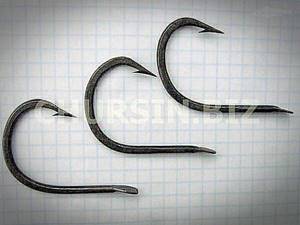
This hook, about 40 mm wide, requires a lot of bait. I don’t see the point in such huge hooks when fishing on the Don. On the Volga or in other rivers where very large catfish remain, they are probably caught with such huge hooks. The leash is made of four lines with a diameter of 0.5 mm. The leash is too thin for this hook.
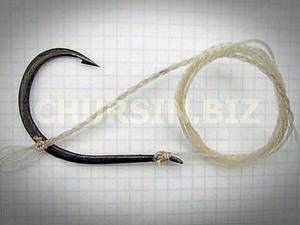
The size of the hook used depends on the bait and the size of the intended prey. This photo shows light and thin homemade hooks compared to what are probably the largest ones.
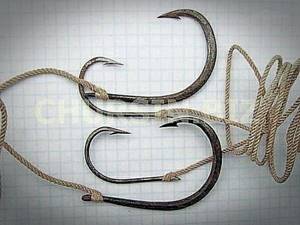
Excellent Soviet hooks. These were produced in the Soviet Union. The hooks are woven into a short leash designed to protect against catfish brush teeth and for proper placement of bait. Catfish fishermen on the Don still use such equipment despite the absence of large catfish in the Don. The hope of catching a huge catfish lives in my soul. And a habit, of course.
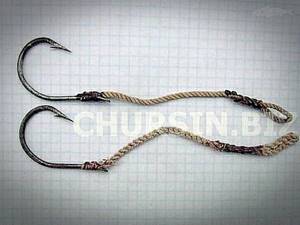
These are homemade hooks for catching catfish with a quok, woven into one piece with the nylon protection of the main leash made of fishing line. Did you notice the shape of the hooks?
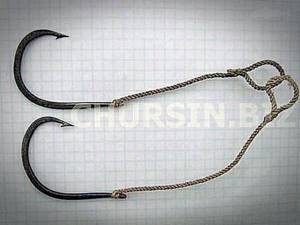
The choice of tackle is the main trump card in fishing for river “king fish”
Fishing with a donk, as practice shows, provides good results. Donka is a simpler and more reliable fishing tool than a spinning rod, but the main advantage is affordability. For example, one good spinning rod is equivalent to the price of thirty donks.
Two types of donkey
In a certain area, fishermen use their own types of donks, with their own secrets. But they are all similar in principle of operation, differing only in nuances.
First, let's look at a donk with a fishing rod. To equip it, a high-quality and strong fishing rod is required. These can be duralumin spinning rods or modern sea and carp “sticks”. The main requirement is that the fishing rod can withstand the strong gusts of a large catfish. The corresponding approach to the reel is reliability and strength.
The correct choice of fishing line is influenced by the size of the catfish living in the reservoir.
In some situations, it is recommended to wind monofilament with a thickness of 0.5-1 mm, and for trophy fishing, braid with a diameter of 0.5-0.8 mm is required.
The leash is placed 0.1-0.15 mm thinner than the main line.
The sinker must be sliding or stationary. If the current is insignificant and the depth is shallow, then the sinker can have a mass of 100-150 g. To keep the bait in a deep hole away from the shore, you will need a load weighing up to 1 kg. Most often, a large stone is used, which is wrapped with a rope made of natural material and firmly attached with a 0.4-0.5 mm fishing line to the tackle. As soon as the river giant bites, the connection will break and the stone will remain at the bottom. In such a situation, you will need a boat to deliver the equipment to the fishing site.
To catch catfish, you will need hooks . Often live bait is placed on a pair of such hooks at once, with one piercing the back behind the fin, and the other piercing the area of the anterior ventral fins. The risk of fish escape in such cases will be greatly reduced.
To catch catfish in the current, you can use bottom tackle without a traditional rod. This is due to the small fishing distance. And this kind of tackle is called a zakidushka. There is very little left in this type of gear that is sporty. But in the end, how the fisherman will show himself depends, of course, only on him.
If fishing is done from the river bank, the fishing line is carefully attached to trees, bushes or stakes firmly driven into the bank. If you fish from a boat, you need to hold the tackle with your hand. The role of the main fishing line in such a donkey is given to a durable nylon cord. Leashes 0.5-0.8 mm thick are attached to it. A sinker is carefully tied to the end of the cord. Its mass depends on the fishing conditions. Next, a large hook (single, double, tee) is tied to the tackle. Its size depends on the bait and the size of the expected prey.
Improved bottom with a float for fishing in the water column (where catfish feed)
Donk hooks features
Kwok for catching catfish is an object that attracts fish with its sound, similar to croaking. It consists of a snout, a knife and a handle. The handle is usually wooden, which is comfortable to hold. A thin knife is made of metal. The patch should be smooth, made of metal, wood or resin. The distance of the angle from the handle to the knife is 60 C.
You need to make sounds with this quok, lifting it sharply upward. This is what makes catching catfish different from regular fishing. This is usually done from a boat. Immerse the quok about 10 cm into the pond. As soon as the catfish hears the sound, it begins to swim upward and meets the bait. At this moment you need to prepare for a strong jerk. It is prohibited to wind the fishing line around your hand!
Night fishermen love to catch catfish with a donk. This is a device that holds a fishing rod near the shore. The most important thing is to choose the right place where the catfish are found. Most often these are holes. Fishermen set up several fishing rods at the same time. In the area of the shallows, bottom fishing is useless.
Why do somyat fishermen use homemade hooks:
We suggest you read: How to catch shrimp, practical tips
- What remains are homemade catfish hooks from our fathers and grandfathers.
- Not all wire hooks of the appropriate diameter are suitable for catching catfish. Most of the large hooks sold in fishing stores are designed for sea fishing or it is not clear why. Often the hooks sold have a strange shape, including a tip bent inward, which in no way contributes to successful hooking.
- “Store” hooks are expensive.
The main reason for using homemade hooks for catfish is dissatisfaction with the shape and strength of the hooks sold in fishing stores.
It should be noted that some fishermen are “sick” of gigantomania. Using huge hooks to catch catfish often does not make sense. And from “store-bought” hooks it is quite possible to select strong and thin hooks of the optimal size for the bait used. This is especially important for those using fishing rods and fishing lines (braids).
The first photo shows a unique homemade fishing hook for catching catfish with a kwok. I seriously doubt that you will see such hooks anywhere else. The hook is made with needle files from an unbent spring of a suitable diameter. Naturally, the hooks were not heated during manufacture. A magnificent hook of the correct, beautiful shape with incredible strength.
I have come across the opinion that hooks for fishing with quok should be straight, without bending towards the blade. I do not agree with this opinion because when hooking, the straight hook turns outward.
Handsome man close up. Ideal proportions
Classic shape and size. Nothing to add.
This hook, about 40 mm wide, requires a lot of bait. I don’t see the point in such huge hooks when fishing on the Don. On the Volga or in other rivers where very large catfish remain, they are probably caught with such huge hooks. The leash is made of four lines with a diameter of 0.5 mm. The leash is too thin for this hook.
The size of the hook used depends on the bait and the size of the intended prey. This photo shows light and thin homemade hooks compared to what are probably the largest ones.
Excellent Soviet hooks. These were produced in the Soviet Union. The hooks are woven into a short leash designed to protect against catfish brush teeth and for proper placement of bait. Catfish fishermen on the Don still use such equipment despite the absence of large catfish in the Don. The hope of catching a huge catfish lives in my soul. And a habit, of course.
These are homemade hooks for catching catfish with a quok, woven into one piece with the nylon protection of the main leash made of fishing line. Did you notice the shape of the hooks?
In this photo, the three bottom hooks are designed for catching catfish with donks, and the top one is specially made for fishing with a quok. Here they are all used for fishing with small baits with quok.
Let me remind you: these are HOMEMADE hooks, and the bottom hook was made by the author of these lines somewhere in the late 90s. Circle hooks were made approximately 50 years ago. Who dares to say that our grandfathers were worthless drunks? Do fishing tackle manufacturers come up with their own gear or do they take hard-earned experience from professional fishermen? The fisherman who taught me how to make hooks made something between these two patterns, but this is the basics.
We suggest you read: When does bream start biting in the spring • Mega Fisherman
Making donks with your own hands
To make a catfish fishing tool, you need a specially strong fishing line (diameter 0.5 - 1 mm) or rope, as well as hooks of size No. 10-40 and a fairly heavy weight.
The design is striking in its simplicity:
- A load is attached to the end of the device, above which (at a distance of 30-50 cm) leashes are tied. With the help of a carbine, all this equipment is added to the main fishing line.
- The good thing about homemade equipment made from scrap materials is that it is effective on catfish of impressive size.
- When assembling a homemade donkey, the role of fishing line is played by braided or twisted twine. Experience shows that the maximum load of such twine is 25-35 kilograms. Do not skimp on the length of the cord; always leave a margin of 50-150 m.
- A weight that will hold the bait at the bottom can be purchased at the store; there is another option, more labor-intensive, but creative - to cast it from lead in the desired shape.
- Knit a load at a distance of 40-90 centimeters from the hook. The weight of the load itself depends on the type of reservoir in which fishing takes place: on a river it weighs 60-100 grams, and in stagnant water of a pond 30-60 grams.
Leash materials
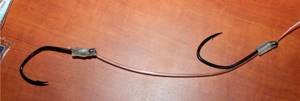
Leashes can be made from any durable material. When catching small specimens, a “pigtail” of several lines is quite suitable. If you plan to catch large specimens, then this may not be enough. Therefore, more durable materials are used, such as:
- steel cables;
- metal wire;
- guitar or piano string;
- nylon cord.
For those who do not want to spend their precious time making leashes, there are many different devices available in fishing stores. Here you can also purchase leash material intended for hunting catfish. It has a breaking load of 25 to 45 kg. As an alternative, you can use tennis racket cord. This is basically a braided line, but it has thinner threads woven into one. Such material may be too tough for a catfish.
Equipment for catching catfish
Best bait
Live bait is the best bait for catfish.
insects, small fish, fresh or half-rotten meat are used as bait for catfish , since the preferences of catfish are varied and sometimes unexpected. Quite effective mole cricket , but difficult to get. Instead of a mole cricket, locusts are also suitable.
An excellent bait for catfish is the mussel . The jelly-like contents of the shell are used as bait.
Decent live bait. With its help you can catch decent-sized catfish. Often a frog is used as live bait. Its advantage is that it is easier to get a frog than a mole cricket.
Worms (crawlers) are excellent for catching small catfish (1 to 2 kg). One of the disadvantages of fishing with worms is that, due to their modest size, you need quite a lot of them.
How to increase your fish catch? ">
Over 7 years of active fishing, I have found dozens of ways to improve the bite. Here are the most effective ones:
- Bite activator . This pheromone additive attracts fish most strongly in cold and warm water. Discussion of the bite activator “Hungry Fish”.
- Increased gear sensitivity. Read the appropriate manuals for your specific type of gear.
- Pheromone -based lures .
DIY kwok
There are quite a few variations of a curved stick with a flat end, but they are all united by a common manufacturing principle. It is advisable to have several models in order to choose the best option during the hunt.
So, the components of the device are a handle, a knife, and a snout:
- The handle is made of wood (apple, maple) or duralumin. Having given the wooden handle a certain shape, the surface must be treated with a special impregnation for such products, and upon completion it must be varnished.
- The knife (made of a duralumin plate with a thickness of more than 3 mm) must be firmly fixed in a vice, and a mold must be molded from plasticine to fill the patch. An important point: the knife must enter the body of the patch at least 5 mm. In order for the patch to be securely attached to the plate, you will need to make 2 holes.
- The patch is made of epoxy resin with a hardener.
Upon completion, the product is refined using a file and sandpaper. For ease of use, it is recommended to make the angle of attachment of the knife and handle adjustable.
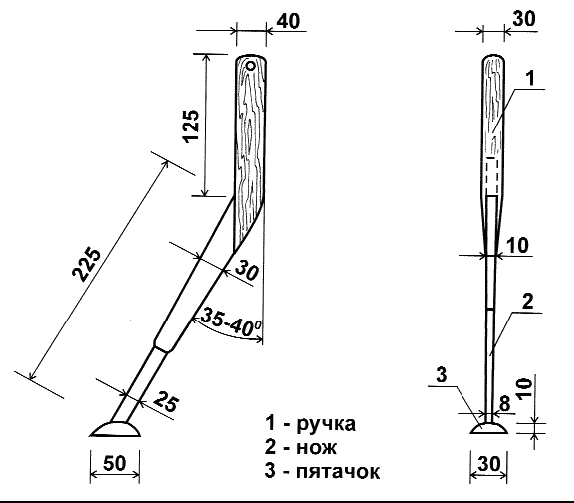
structural diagram of a quok
Donkey fishing technique from the shore and from a boat
Successful catfish fishing is possible on the river bank.
It is important to take into account that the location of the fish and its crowding should be within reach for casting bait. It’s ideal when you manage to position yourself on the shallows next to a large catfish hole. Then the bite will be excellent, and the chances of winning in a difficult fight will certainly increase. During the daytime, it is necessary to carefully prepare, so to speak, the workplace so that everything is at hand in the dark. With a rod. For the rod, you need to install stands, loosen the friction brake of the reel, prepare a bell or firefly (or any other signaling device, you can make it yourself).
Without a rod. For ordinary donks, it is advisable to select strong branches or drive in powerful sticks.
But when using donkey from a boat, fishing should take place during daylight hours. To attract the attention of the catfish to the bait you have to raise and lower it, but it is even better to use an effective device called a kwok. Some fishermen use donks with short rods, while others find it more convenient to hold the tackle in their hands, feeling the slightest touch of the fish on the bait.
You can familiarize yourself with other equipment for catching catfish from the shore and from a boat in our other guide.
You can catch live bait using float, feeder or spinning gear: perch on a retractable leash, roach on a float, crucian carp on a feeder.
Spinning for jig fishing - nuances of choice and obvious things that are unfamiliar to many advanced spinning anglers.
Equipment for fishing from a boat with kwok
Catching catfish from a boat is not much different from fishing from the shore.
For this method, the same gear is used, but you need to lower the load with bait from the boat. Fishing from a boat is more convenient because if you make a mistake with the place, you can easily and quickly change it. A device called “kwok” is also used, with which the fisherman makes a sound that attracts the catfish to the boat. For more information on fishing for kwok from a boat, see our catfish fishing guide.
Live bait, crawler, and frog are used as bait.
When deciding on a fishing spot, choose places where there is no strong current. Otherwise the bait will float up. If you place the boat across the river, then in addition to the bait you need to tie sinkers.
Features of seasonal fishing in spring, summer, and autumn
Spring
Donka is an important tackle when fishing in the spring. Especially in May, you can get a positive effect from catching catfish with a quok.
The coolest places for catching catfish are the exits from the pits where the fish spent the winter. In the spring, in the afternoon, after the water has already warmed up, the best time for catching catfish begins, which begins to intensively cruise through a warm body of water.
Summer
You can familiarize yourself with other equipment for catching catfish from the shore and from a boat in our other guide.
You can catch live bait using float, feeder or spinning gear: perch on a retractable leash, roach on a float, crucian carp on a feeder.
Spinning for jig fishing - nuances of choice and obvious things that are unfamiliar to many advanced spinning anglers.
Leashes in different methods of catching catfish
To catch catfish, they usually use “donka”, “quoka” fishing, feeder tackle, and also fishing with wobblers using the “trolling” method.
Bottom tackle for fishing from the shore
For coastal fishing for catfish, a powerful rod with a length of three to three and a half meters equipped with a power reel is usually used. The rig is simple, with a sliding sinker. A sinker is threaded into the main line. A strong swivel is attached to the end, to which, in turn, a leash with a hook is attached. The length of the leash is from one to one and a half meters. To catch large catfish, it is recommended to use steel cable or wire.
Fishing tackle using the kwoka method
Tackle for fishing from a boat with a kwok usually consists of a short and strong spinning rod. Equipment with a rigidly fixed sinker. A wire is threaded into the sinker and bent at the edges into rings. The main fishing line is attached to one ring, and the leash with a hook to the other. The leash is usually one meter long. If fishing is planned for large fish, the leash is made of nylon cord.
Tackle for catching catfish on a feeder
The method of catching catfish on a feeder involves preliminary feeding and luring fish to bait. Then the fishing process begins. To rig a feeder for catfish, a “paternoster” is usually used. At the end of the main line, two twists are made, with loops at the ends. The first is twenty centimeters, a feeder with bait is attached to it. The second is smaller, about fifteen centimeters, on the loop of which a leash, one meter long, is attached.
Large catfish are not caught with a feeder. And the leash is no different from any other gear - use nylon so that the catfish does not cut the fishing line.
Tackle for catching catfish using the “trolling” method using wobblers
“Trolling” refers to the method of fishing from a moving boat with a fishing rod and equipment on it. The bait used is an artificial bait - a wobbler. Typically, when trolling at great depths, a steel frame is used to hold the wobbler at a given depth. The frame is a piece of wire bent at an angle of ninety degrees. A sinker is attached to one end, and a long leash made of soft metal cable with a wobbler at the end is attached to the other.
Among fishermen, opinions differ regarding the material of the leash. Some say that they are less willing to take the bait if they use metal as a leash. Others argue that there is no difference in the material of the leash; catfish will equally grab the bait with a steel cable and with a fishing line as a leash. Try all the materials and you will find the right one for you.
Features of seasonal fishing in spring, summer, and autumn
Spring
Donka is an important tackle when fishing in the spring. Especially in May, you can get a positive effect from catching catfish with a quok.
The coolest places for catching catfish are the exits from the pits where the fish spent the winter. In the spring, in the afternoon, after the water has already warmed up, the best time for catching catfish begins, which begins to intensively cruise through a warm body of water.
Summer
Summer fishing for the “master of the pools” is a very exciting activity, since it is at this time of year that the best bite occurs.
Fishermen do not notice either time or fatigue. There are a number of effective ways to catch catfish in the summer. At this time of year, it lives both in the depths and visits the shallows on the rifts. The choice of place to catch catfish in summer is varied. But the main location remains proven quiet pools. You can see them in the evening, when the heat subsides, how they cut through the surface of the water, creating noisy splashes.
Catfish bite well, both in the morning and in the evening. But it is best caught at night in the summer. A tasty bait for catfish at this time is a piece of fish or a frog. But in each river it bites differently, even in a special way.
Fishing with several bottom fishing rods is the most successful option. You can put different baits on all the hooks. It is better to cast for a frog closer to the shore. You can cast it further away with live bait and crawlers.
Autumn
Catching catfish in the fall is a simple, but at the same time very exciting activity. Catching catfish is not particularly difficult, since when the temperature drops and in cloudy weather, it begins to feed at an accelerated rate, without leaving its permanent places of deployment.
However, in the fall it is more difficult to guess the habitat of the catfish than in the summer or spring. Determining such a place is possible by observing the habitat of fish such as carp, bream, and chub. Where there is a clear concentration of these fish, catfish may also be present. It turned out that catfish actively bite in the fall during the day than at night. The fishing location also affects the bite - it will be better to bite in holes than in shallow water. A particularly good time for fishing is early morning. Maintaining silence is a sure guarantee of successful fishing, since catfish are a particularly sensitive fish to extraneous, unfamiliar noises.
What is the key to success in catfishing? The first is to fish in the right place, the second is to fish at the right time of day, taking into account the greatest activity of the fish and the tendency to feed, the third is to catch catfish with the right tackle and with the right bait. All these three correctness will ultimately lead to a simple algorithm - catch catfish in pits, mainly at night and preferably with bottom gear.
primanki.com
Catfish fishing gear and fishing methods
The oldest method of catching catfish is considered to be bottom tackle (donka).
- Bottom tackle for catfish is a strong cord with a leash made of 0.5-1 mm fishing line.
- Large single hooks are used from No. 10 to No. 40.
- The weight of the load depends on the casting distance, the strength of the current and the depth of the hole.
The cord can be tied directly to a bush or peg on the shore, or it can be wound around an inertial (or inertial-free, depending on the fisherman’s taste preferences and (!) power of the reel) reel mounted on a powerful short fishing rod. The rod is also firmly attached to the shore. Donks usually catch catfish at night, checking early in the morning.
Traditionally, catfish are caught using poles that are tied to coastal trees. The equipment of the zherlitsa is similar to the donka. Frogs and large live bait are used for bait.
Fishing for catfish using a spinning rod from the shore is carried out only in those places where the holes are located close to the shore. Once in such a hole, fishing can be successful.
- The rod should be rigid and powerful, about 3 meters long.
- Reels are used inertia-free or multiplier.
- Large spoons and jig baits are used for fishing.
Jig budget spinning rod Favorite Zander
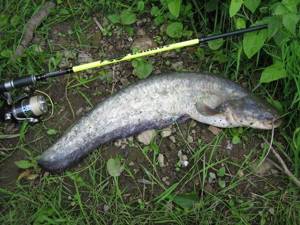
Trolling is also popular nowadays. A powerful spinning rod, baitcasting reel, braided line and deep-sea wobblers often bring trophy fish.
An ancient way of fishing for catfish is fishing from a boat with a kwok. Hitting the water with a quok attracts freshwater giants. At this time, under the boat at half-water there is an appetizing bait, which the fish grabs. Some anglers use a rod and reel, while others hold the line with their hand, feeling any touch of the fish on the bait. Successful fishing requires a clearly tuned nook and a refined nooking technique.
Under no circumstances should you wrap the fishing line around your hand when fishing for a large catfish, otherwise it may drag you into the water.
The best models of spinning rods St. Croix in an extensive review of the largest manufacturer of spinning rods.
Review of the best Favorite spinning rod models.
Which spinning rod from the Major Craft brand to choose for catching catfish and other predatory fish - detailed instructions.
The most important points determining the choice of hook
There are fishing stores where you can purchase the necessary gear.
What are the main criteria that ideal catfish hooks should have:
- sharpness. Catfish are large fish, therefore, in order to catch them, the jaw bones must be broken. It is almost impossible to do this with a blunt hook. When purchasing, try to check the sharpness of the punctures - on paper or cardboard;
- strength. When assessing this criterion, you need to know what material it is made of; high-carbon steel is the best;
- inspect for bends and determine integrity. If it becomes deformed when pressed, then it is not worth buying, because it will be impossible to fish with it.
It will be important to decide on the thickness and strength of the fishing line, since a thin one will not withstand such a large catch. So, for different fishing methods, leashes braided from fishing line are used.
One cannot ignore such an important criterion as the choice of gear size.
Hooks for catching catfish using a line
Another version of a homemade fishing hook for catfish, turned with needle files from an unbent spring. The hook is tinned, designed for attaching live bait when catching catfish using nets.
Even high-quality Japanese OWNER fishing hooks quickly disappear “on the fish”, that is, with frequent baiting. Only tinning saves. The hook is woven into the leash and forms one whole with it. Such hooks together with leashes can withstand a “dead” weight of 50 kg. During testing, the leash is tied at a sufficient height and a bag weighing 50 kg is hung on the hook. Show me Japanese hooks that can withstand 50 kg. at this size and thickness. I doubt that such exist. The excellent OWNER hook of a larger size and greater thickness does not hold even 20 kg - it begins to unbend at 15 kg. I checked it personally.

For fishing with nets, straight hooks without any bends and with an elongated shank are used. Sample in the photo.
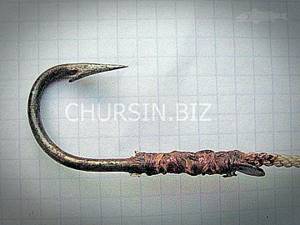
Classification of catfish hooks by size
Since this predator is capable of growing quite large in size, therefore, it will have considerable strength, and it will be very difficult to control it. Fishermen are most often aware of what kind of catch awaits them in the reservoir. But what if the place is unfamiliar? In this case, you should focus on small-sized prey, the approximate weight of which is 6-7 kg; ordinary carp tackle will suit it. If you still know the approximate weight of the fish in this place, then use hooks in accordance with the weight of the catfish.
Thus, the following sizes are distinguished, respectively, if the fish has:
- Weight about 10 kg, No. 5/0-6/0 should be used.
- The weight of the “predator” varies from 10 to 15 kg, then No. 9/0 is used.
- More than 15 kg, No. 10/0-11/0 and more are required.
Bait must be used in accordance with the size of the hook. For small catfish, up to about 9 kg in weight, you can use a crawl. If the fish are larger, you need to use larger bait. Chicken or lean meat are suitable for this purpose; some people use frogs.
If you want to catch a large catfish, do not skimp on bait. The larger it is, the heavier the catch.
Tees for catfish
Triple hooks for fishing with quok. Homemade and OWNER. It happens that when a catfish approaches, a single hook lies flat between the brush-teeth of the catfish. Treble hooks do not have this disadvantage, but treble hooks are difficult to place bait on.
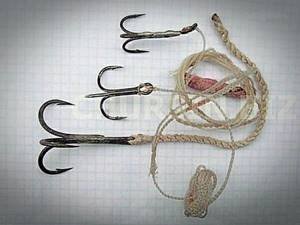
A large homemade tee woven into a short leash as protection against catfish toothbrushes.
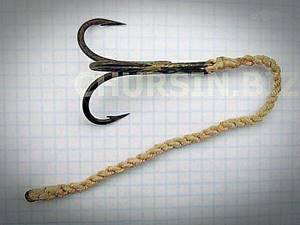
Small homemade tee. A homemade artificial caterpillar is visible.
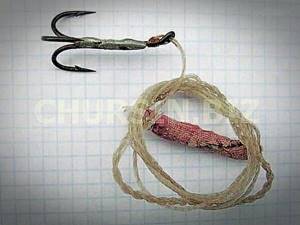
This is an excellent Japanese OWNER treble hook. The hook is woven into the leash with a “pigtail” of six 0.6 fishing lines. I went too far with the leash. Somyat threw up to 12 kg into the boat without ceremony. Not a leash, but a rope. About the disadvantages of braided leashes on the page Leashes for catfish
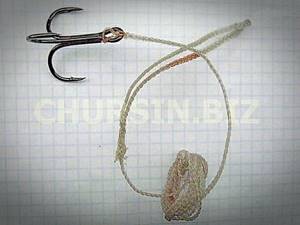
Features of the structure of the catfish hook
Of course, the most important criteria in choosing a hook are size, sharpness and strength. However, in order to evaluate them correctly, you need to understand its structure. This information will also be useful to those who manufacture them themselves.
The pictures show that a regular fishing hook has a complex structure, but when fishing for catfish it is important to focus on the following parts:
- sting. Its main requirement is ideal sharpness;
- goatee It should be of medium size to prevent failure when hooking;
- prying It is better to choose a rounded shape, this will ensure that the fish tightly grips the bait and prevents it from running off;
- head. Here it is recommended to use straight or curved outward.
Remember that the distance between the hook and the beard should be sufficient to avoid the catfish jumping off. When making gear at home, to make it durable, you need to use calcined wire and twisted fishing line.
Features of the hook structure
A catfish hook, in its essence, is not much different from the accessory familiar to most fishermen. In its design features, it has all the same basic structural elements, differing significantly in that only the size of the hook is several times larger than the types usual in float fishing. Catfish are caught on hooks with a long shank, which ends in a fastening head made in the form of a rounded, soldered loop, bent from the hook in the opposite direction at an angle of 60–75 degrees. The fastening loop allows you to knit cords more securely and conveniently, and the bend prevents the cord from chafing at times when a fish caught, but not yet noticed by the fisherman, remains on the tackle for a long time, for example, the entire night time period of the fishing session.
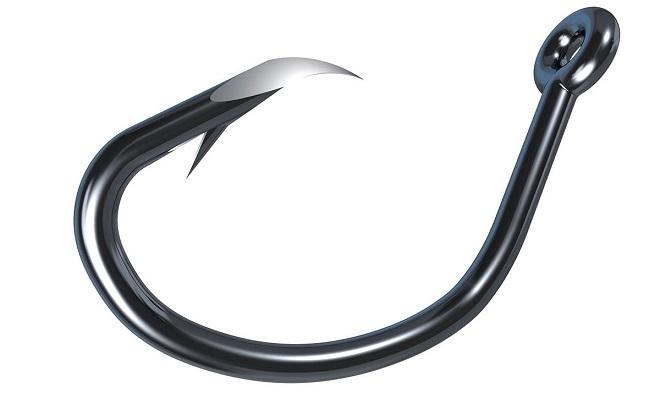
Another feature of the selection is the length of the beard. Its size should clearly stand out against the background of the sting of the accessory, but at the same time not look like an exaggerated appendage extending deeply into the central radius of the accessory. The gap at the rise between the bit and the base should not exceed 3 mm. Long barbs are prone to deformation under the compression pressure of the predator's powerful jaw brushes, which negates the effectiveness of hooking even with a super-sharp sting. For more effective fixation of baits, and especially live bait and fishing in strong currents, changes are made to the design of the catfish hook by bending the sting inwards under the hook, and also experimenting with the radius, slightly breaking its circumference in the back of the head or frontal part.
What technique is used for catching catfish using kwok?
Unfortunately, catching catfish with a quok from the shore is impossible, no matter what all kinds of experts say about it. The device is immersed in water at a speed similar to tearing a stretched newspaper. The movement is tangential, from front to back, at a depth of no more than ten centimeters.
Extraction from the reservoir occurs at the same speed and in the same direction of movement. At the very beginning, the beginner will produce a lot of splashes, and the sound that will come out will be far from the one to which the catfish will react. However, over time there will be almost no splashes, which means that everything is being done correctly and catching catfish with a quok from a boat can be successful.
If we consider the secrets of catching catfish with a kwok, then we should take into account that fattening fish can make no more than a couple of strokes with its tail over a certain period of time, wrapping it in its reach. It turns out that a high frequency will scare away the fish. It is best to count from one to three when removing the hook, and on the fourth count, immerse the decoy again in the water.
Fishing for catching catfish with a quok can also be accompanied by single claps at intervals of 15 to 30 seconds. The most common scheme is to knock a couple of times, then wait a minute. Believe me, it is much easier to scare a catfish with excessive clapping than with moving a boat from place to place.
Starting to catch catfish with a kwok always seems easy, however, once you go to a pond, you begin to understand that first impressions are deceptive. There must be an understanding of the nature of the sound produced when hitting the water. The heel plunges into the reservoir, carrying with it an air bubble; upon exiting, it breaks the surface of the reservoir.
The resulting cavity instantly slams shut as the water levels out. One option for successful knocking is to jerk your hand up at the very end. And the faster this can be accomplished, the steeper the hole in the water will be and the louder the clap will sound. This movement must be practiced until it becomes automatic.
What bait to use for catching catfish using kwok
When fishing for catfish using quok, gear and bait do not play a primary role. The equipment is lowered into the reservoir to a certain depth, but is not placed on the bottom. They knock on the pond with a clap, and the fish, attracted by the clapping, rises from the depths and grabs the bait.
Catching catfish with quok bait is necessary only as a provocation so that the mustachioed one grabs it and gets hooked. Let's look at what can be planted.
- Bivalve mollusk pearl barley. You can find them in the shallows. The shells are opened with a knife directly during fishing. Thread several units onto the hook, leaving the tip open.
- The bark beetle larva is very fleshy and dense. Habitat: rotten trunks or stumps. It can be detected by small sawdust near the tree and holes in it.
- Catfish are good for catching frogs, which must be caught in a local body of water, preferably at night with a flashlight. The puncture is made near the anus, being careful not to touch the spine.
- Scorched bird. This bait greatly excites the catfish, teasing the baleen’s sense of smell. Both wild and domestic birds are suitable. The feathers are heavily scorched over a fire, then the carcass is left warm until a slight smell appears.
- It is also possible to mount pieces of meat and fish, although they must first be spoiled to the point of a fetid odor.
- Catfish also do not disdain bottom inhabitants - crayfish, which look very natural if planted correctly. Under no circumstances should the tail be pierced, otherwise the cancer will die immediately. The arthropod is pierced just above the eyes. This is how catfish are caught using kwok on the Don.
- Catfish like the smell of the mole cricket, the problem is that it is not so easy to get.
- The most common attachment is earthworms, which are planted in a bunch of a dozen or more. A similar bait can be used on any body of water, even if you are fishing for catfish using a quok on the Kama.
- In principle, the main diet of the mustachioed fish is fish, so you can hook any live bait with an average weight of 200 g or more. This is a solution for those areas where it is difficult to get other types of bait. For example, this is how catfish are caught using kwok on the Oka River.
As mentioned above, the mollusk is one of the favorite delicacies of catfish, as we wrote about in the article “From perch to catfish: catching a predator with a spinning rod.” To open a shell, you need to place it on your palm with the thick part facing you, and with the other hand cut the muscles of the valves on both sides. String two dozen pieces on a hook at a time.
Catching catfish with quok gear involves the simplest
Gear for catching mustachios is distinguished by its simplicity and unpretentiousness. Since ancient times, and sometimes to this day, the rig is a 5-mm rope with a heavy lead weight, from which a hook is tied at a distance of about one meter. In the modern world, the tackle has changed somewhat, only the principle has remained the same: a short spinning rod, a multiplier reel and a whip.
Catching catfish with a quok in the Middle Volga is carried out using a homemade rod with a spear and a muzzle. The cross-section of the central scaffold is within 3 mm, the load is 0.15-0.2 kg. A tee of number zero is knitted onto a 3-mm nylon leash, one meter long.
Catching catfish using kwok in the Tsimlyansk Sea is carried out with similar gear. A stainless steel 2-mm section is threaded into a massive conical weight and ears are made at both ends - for the central line and leash. The large weight of the cargo does not allow the equipment to be removed from under the craft.
- Hooks
. It is believed that when catching catfish with a quok in a reservoir, it is best to use single hooks, since a tee of similar size is too large. If you take a smaller tee, the likelihood of catching a catfish decreases significantly. Often fishermen prefer to make them themselves from 5 mm steel wire. It is important to remember that it is possible to catch even a small catfish with a large hook, but a small one with a small section of braid will simply break the fish and then die. - Cord
. The nylon cord is wound on the reel in a figure eight, in this case twisting can be avoided. The rigidity of the cord prevents it from getting tangled, and due to its inextensibility, it is easier to break through the mouth of a predator when biting. Equipment for catching catfish with a quok implies a cord length of within fifty meters with a cross-section of 4-5 mm. - Cargo
. It is cast in the form of a cylinder with a through hole. The sinker is strung on a cord and secured a meter from the hook. If a load falls out of place, it can cause trouble. To prevent this, a stop knot is knitted below, and if something happens, the load will not fall below the mark.
Since the catfish has a huge number of small and sharp teeth, the cord can scratch and fray over time, which forces you to constantly inspect it. Soft leashes are not suitable for catching this fish; moreover, they constantly get tangled around the load, and the resulting knots weaken the equipment.
How to determine the best time to catch catfish using a kwok
To successfully fish for the mustache, you need to choose a promising area. The mustachioed one looks for the deepest places in reservoirs. In addition, he prefers peace and quiet, descending into deep-sea holes and pools. On small rivers, catfish have their own path along which they walk in search of food. At the end of spawning, to restore strength, catfish have to migrate a lot anywhere in search of fish or crayfish.
Successful catching of catfish in spring using kwok
As soon as the temperature in the reservoir rises to ten degrees, the mustache begins to move. Depending on weather conditions, fishing can be successful both at the beginning of April and towards the end. Catfish come out to shallow water areas where they bask in the sun's rays.
Catching catfish with quok in the Perm region appeared relatively recently, much later than on the Volga, however, with the same gear and fishing techniques, different baits are used. It is not clear how this fact is explained, but in the spring the mustachioed one bites better on a sandwich made from chopped pieces of squid and earthworms. A truly exotic bait.
Catching catfish in summer using kwok near the shore
Summer is considered the most favorable time to catch this predator. June is marked by bites of small specimens; by the middle of the month the weight can approach trophy weight. During hot times of the day, the mustachioed one likes to sit out in the depths, but in the early morning or at dusk it tends to the shore in search of prey.
Catching catfish using kwok on the Tsimlyansk Reservoir is often marked by winds and a decent wave. In hot weather, the water blooms strongly, taking on the appearance of a dense green blanket. In this case, you can use a fixed nooking, rafting along the cord for a hundred or two meters and moving to another place in case of failure. In case of strong waves, you can use floats, which perform a dual role: they move the gear away from the craft and dampen the jerking of the equipment on the wave.
Catching mustache in autumn
Until the onset of frost, you can quite successfully catch a predator. But as soon as stable cold weather sets in, he calms down in the chosen pit. In the first autumn month, the baleen begins to energetically obtain food, preparing for the winter. This period is one of the best for quoting.
Catching catfish using kwok in the north-west of the country occurs throughout the daylight hours, if weather conditions permit. For example, when there is wind and rain, the mustachioed one tends to go deeper, where it patiently waits out the bad weather. The bite for fish ends completely in mid-autumn.
How to make a sail for catching catfish using a kwok
It is believed that a water sail is an indispensable attribute when quoting. By the way, sometimes it is also indispensable when trolling vertically, which we talked about in the article “How to use an inertial reel depending on the fishing method.” A sail is set to hold back the craft in strong winds or currents.
Making the device is not difficult. To do this, you need a thick fabric, for example, a baby diaper made from flannel. You will also need a mop handle and a 10 mm metal rod along the length of the cloth. The handle is attached to the top of the diaper, with metal at the bottom. Ropes are knitted along both diagonals; as a result, the design resembles an envelope in appearance.
At the intersection of the ropes, another one and a half meters long is knitted. One end of it is fixed to the boat through a carabiner, with which you can quickly set the sail. The second end of the rope secures the two diagonals of the sail into a single one in the center. With its help, you can stay in your favorite fishing spot much longer.
Catching catfish with a quok using an echo sounder is very effective. Using this device, you can see the movement of the mustachioed fish towards the bait and, in general, all its body movements. For example, it happens that the fish seems to hang in the water column. In this case, lower the bait lower and make several knocks with the quok.
Catching catfish using a quok with an echo sounder allows you to see the predator’s reaction to the fisherman’s actions and correct them in time. In addition, the device allows you to personally discover all promising places and fish them.


